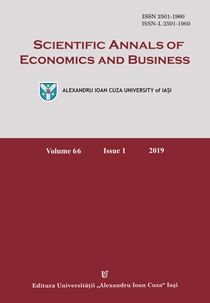Determinants of Shadow Economy in Eastern European Countries
Determinants of Shadow Economy in Eastern European Countries
Author(s): Mykolas Navickas, Vytautas Juščius, Valentinas NavickasSubject(s): Economy, Supranational / Global Economy, Public Finances, Socio-Economic Research
Published by: Editura Universităţii »Alexandru Ioan Cuza« din Iaşi
Keywords: shadow economy; Eastern European countries; MIMIC methodology; tax burden; government regulation;
Summary/Abstract: In this article the relationship between shadow economy and its’ determinants has been examined. Ten Eastern countries from European Union were chosen due to specific particularities, which may cause higher shadow economy levels in the investigated countries compared with the EU average. Time span of 2003-2016 was selected, as 2017 data has yet to be released at the time of the analysis. Article consists of examination of the current situation and shadow economy trends in Eastern European countries; overview of shadow economy scientific literature followed by hypothesis, which are examined by constructing regression models. Models aim to distinguish the relationship between selected determinants and shadow economy size. Scientific literature analysis revealed that increase of tax burden on labor is seen as a primary reason for the increase of shadow economy, however, such relation has not been identified. Furthermore, results show that unemployment and self-employed people ratio affect shadow economy insignificantly. This suggests that further analysis is needed. Nonetheless, regression model has not rejected the hypotheses of corruption level, income inequality, business freedom and GDP per capita effect on shadow economy. Thus, it can be stated that these variables are determinants of shadow economy in Eastern European countries.
Journal: Scientific Annals of Economics and Business
- Issue Year: 66/2019
- Issue No: 1
- Page Range: 1-14
- Page Count: 14
- Language: English

